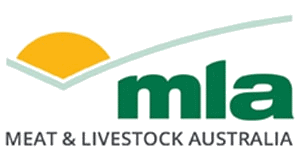Anaerobic Ammonium Removal (AAR) Waste Water Treatment Facility
Did you that bacteria can be used to remove Ammonium from abattoir wastewater?
| Publication date: | 28 June 2022 |
| Project status: | Completed |
|
Download Report
(0.2 MB)
|
Summary
Australian-first biological treatment process that converts ammonia in wastewater to nitrogen gas using bacteria. The system was successfully demonstrated at a laboratory and pilot stage however was unable to progress to commercial-scale due inability to secure an installation, operation and maintenance partner.
Objectives
1. Develop a viable AAR process for meat processing plants.
2. Demonstrate the application of existing process knowledge to show anaerobic ammonium removal (AAR) for red meat processing wastewater at both pilot and full-scale.
3. Application of on-line nutrient sensor technology for the process control of the AAR process.
4. Development of AAR seed material acclimatised to red meat industry wastewater.
5. Build industry experience in the operation of full-scale AAR treatment.
Key findings
The Anaerobic Ammonium Removal (AAR) process developed in this project is a viable nitrogen removal process for mainstream meat industry wastewater. The wastewater treatment train consisted of two anaerobic ponds in series followed by the single tank, sequencing batch reactor (SBR) with no additional proprietary technology such as carriers or sludge selection devices. The second anaerobic pond provided a consistently low volatile fatty acids (mg/L as acetic acid) VFA to ammonia ratio and low Total Suspended Solids (mg/L) feed stream to the AAR process. The AAR aeration strategy, with regular anoxic periods, was key to encouraging the ideal AAR microbiological population during the commissioning process.
Benefits to industry
Anaerobic ammonium removal (AAR) nitrogen removal offers major financial benefits, particularly in terms of operating cost to the Australian red meat processing industry if it can be successfully and reliably implemented.
If the AAR technology proved successful, Australian meat processing facilities would be able to upgrade their conventional Biological Nutrient Removal process as the companies either outgrow their existing systems or environmental controls tighten forcing improved nitrogen removal. The technology could prove popular with the lower operating cost (reduced electricity demand and waste solids) and lower capital cost (smaller volume units required).
MLA action
Results of the work to date have been shared in a final report. MLA has also been made aware of an equivalent technology through Urban Utilities in Brisbane and is investigating its potential for red meat processing waste. This may lead to further R&D.
Future research
In Australia, there are several pilot scale AAR processes being attempted by large urban utilities, including Urban Utilities in Brisbane, but there is yet to be a viable, full-scale operation in an Australian red meat processing facility. Urban Utilities have been researching Veolia’s proprietary ANITA-MOX technology at the Innovation Centre at Luggage Point Waste Water Treatment Plant in Brisbane. Melbourne Water is also conducting AAR trials. These are avenues for future R&D.
|
For more information Contact Project Manager:Greg Williams E: reports@mla.com.au |


